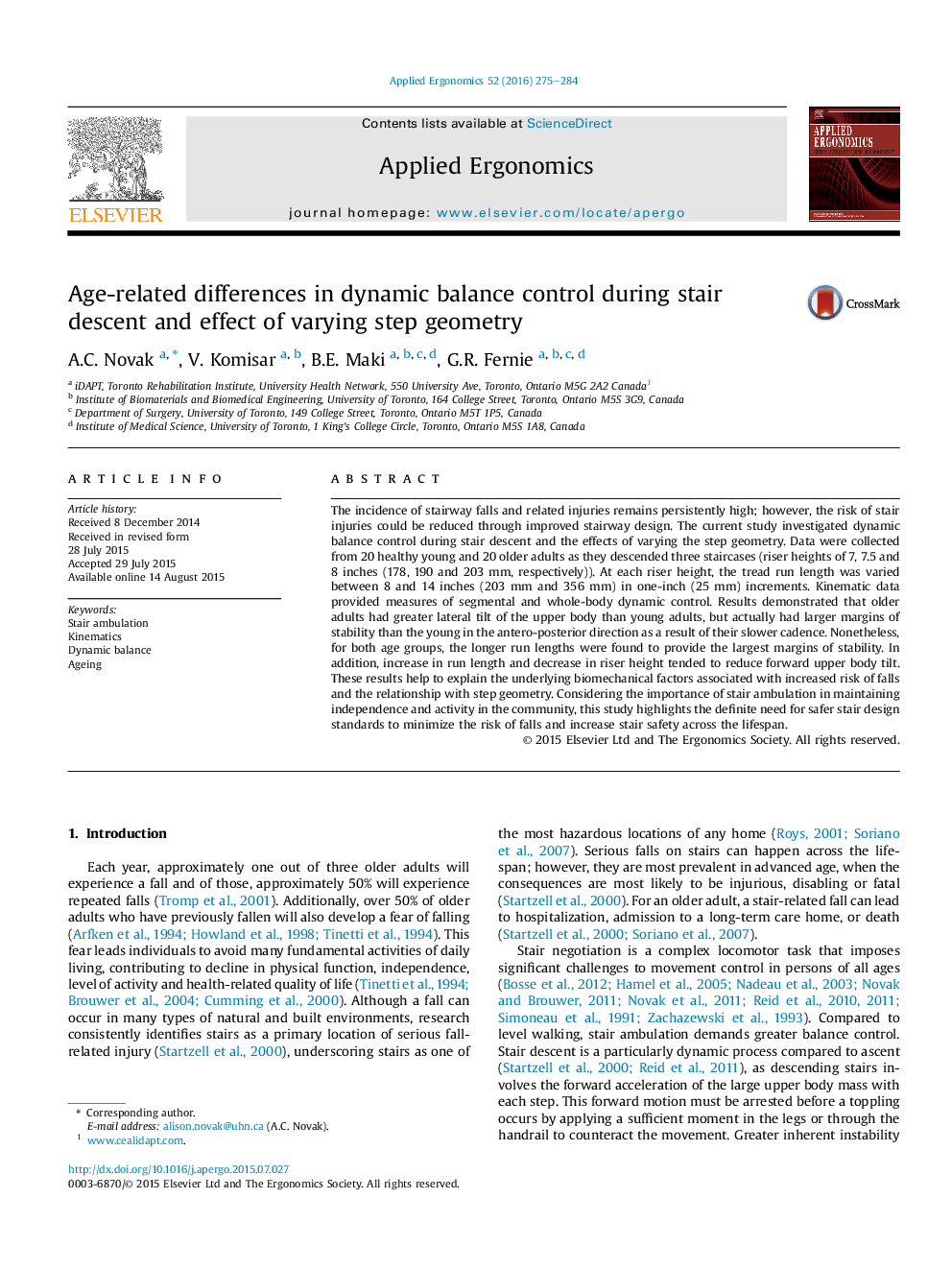| Article ID | Journal | Published Year | Pages | File Type |
|---|---|---|---|---|
| 6947942 | Applied Ergonomics | 2016 | 10 Pages |
Abstract
The incidence of stairway falls and related injuries remains persistently high; however, the risk of stair injuries could be reduced through improved stairway design. The current study investigated dynamic balance control during stair descent and the effects of varying the step geometry. Data were collected from 20 healthy young and 20 older adults as they descended three staircases (riser heights of 7, 7.5 and 8 inches (178, 190 and 203Â mm, respectively)). At each riser height, the tread run length was varied between 8 and 14 inches (203Â mm and 356Â mm) in one-inch (25Â mm) increments. Kinematic data provided measures of segmental and whole-body dynamic control. Results demonstrated that older adults had greater lateral tilt of the upper body than young adults, but actually had larger margins of stability than the young in the antero-posterior direction as a result of their slower cadence. Nonetheless, for both age groups, the longer run lengths were found to provide the largest margins of stability. In addition, increase in run length and decrease in riser height tended to reduce forward upper body tilt. These results help to explain the underlying biomechanical factors associated with increased risk of falls and the relationship with step geometry. Considering the importance of stair ambulation in maintaining independence and activity in the community, this study highlights the definite need for safer stair design standards to minimize the risk of falls and increase stair safety across the lifespan.
Related Topics
Physical Sciences and Engineering
Computer Science
Human-Computer Interaction
Authors
A.C. Novak, V. Komisar, B.E. Maki, G.R. Fernie,
